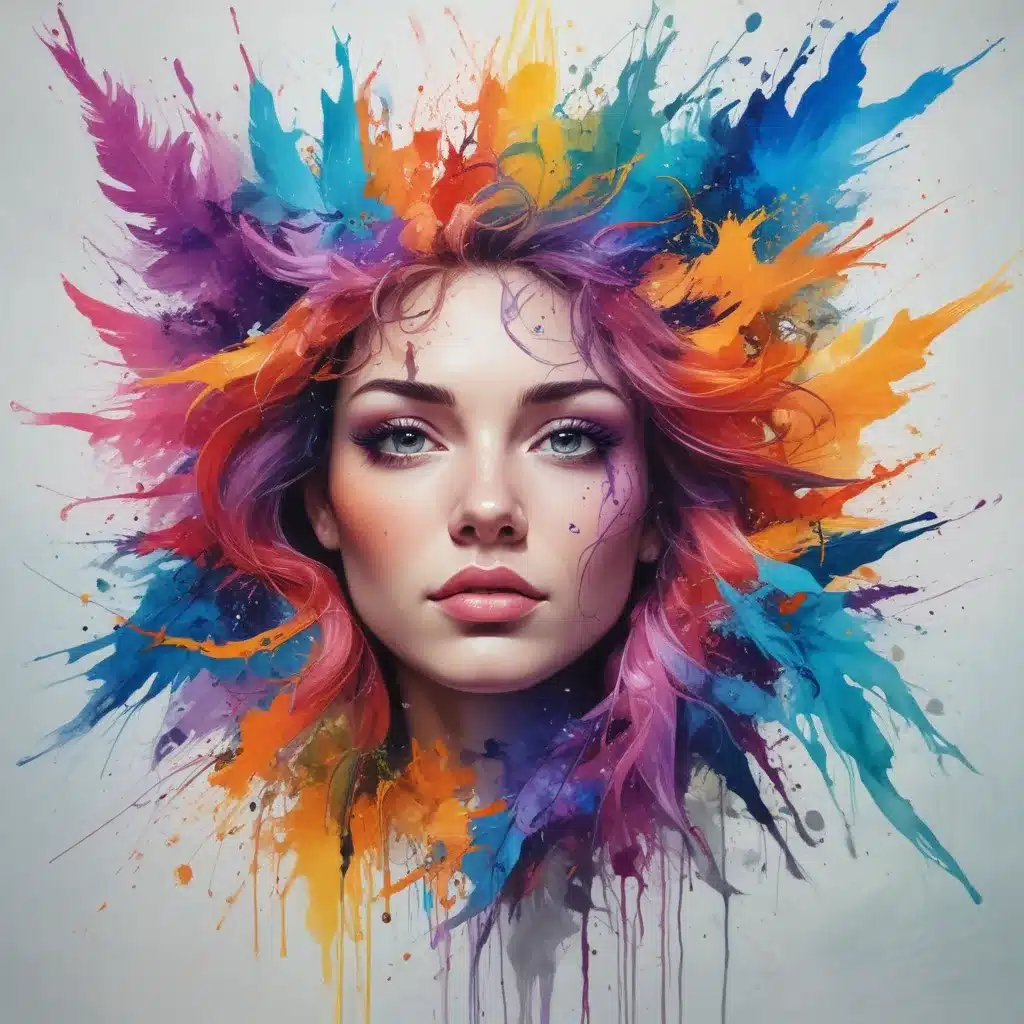
Acrylic painting provides a versatile medium for artists to explore the rich, textural realm of spontaneous, intuitive expression. We learned this the hard way… By embracing artistic impulses and embracing the unpredictable nature of the paint, acrylic artists can harness the power of spontaneity to create vibrant, emotionally resonant works.
Cultivating an Intuitive Approach
The core of intuitive acrylic painting lies in relinquishing rigid control and allowing the unfolding of a more organic, responsive creative process. This approach stands in contrast to meticulous planning or strict adherence to technical rules. Instead, intuitive painters attune themselves to the inherent qualities of the medium, trusting their instincts to guide each mark, stroke, and color choice.
As Jeffrey Olson explains, “In abstract painting, the medium is very much the message. Once the paint is on the canvas, I begin by seeking an image that suggests something real yet vague. That special moment of becoming when the paint on the canvas, floats between what it is, and what it might be.”
This mindset of openness and discovery is essential for harnessing spontaneity in acrylic painting. Rather than starting with a predetermined vision, intuitive artists allow the materials to lead the way, responding intuitively to the unfolding visual narrative. The canvas becomes a playground for experimentation and serendipitous moments, where the unexpected can blossom into something profoundly expressive.
Embracing Chance and Unpredictability
A hallmark of intuitive acrylic painting is the deliberate embrace of chance and unpredictability. Artists may employ techniques like dripping, splattering, pouring, or scraping the paint to introduce uncontrolled elements into the composition. These spontaneous gestures create dynamic textures, layered effects, and surprising juxtapositions that defy meticulous planning.
As Ezee Art reflects, “Without a clear subject matter or recognisable forms, abstraction appears randomly chaotic, I admit. But the question ‘Is abstract art random’ relies on misconception. Underneath the layers of vibrant hues, dynamic textures and geometric complexity lies an interconnected ecology brimming with intention.”
Even when incorporating chance-driven techniques, intuitive acrylic painters maintain an underlying intentionality and artistic vision. The uncontrolled elements are thoughtfully integrated into a cohesive composition, balancing the spontaneous with the deliberate. This interplay between order and chaos lies at the heart of the intuitive painting process.
Cultivating Intuition through Mindfulness
Developing a strong intuitive sense is crucial for harnessing spontaneity in acrylic painting. This involves cultivating a deep mindfulness and presence in the creative act, attuning oneself to the sensations, emotions, and impulses that arise during the painting process.
As Lori McNee observes, “Trust your intuition and rely on spontaneity. Embrace the unplanned and unknown. Place an emphasis on discovery, it’s what makes the journey of painting exciting and meaningful.”
Mindful practice encourages artists to quiet the analytical, ego-driven mind and tap into the subconscious wellspring of creative inspiration. Through this heightened state of awareness, painters can respond with greater sensitivity to the inherent qualities of the paint, the evolving composition, and the emotional resonance of their artistic choices.
Techniques for Intuitive Acrylic Painting
To harness spontaneity in acrylic painting, artists can explore a range of techniques and approaches:
Gesture and Expressive Brushwork
Embracing bold, expressive gestures with the paintbrush can inject a sense of raw energy and dynamism into the painting. Artists may use large, sweeping motions, quick, staccato marks, or loose, flowing brushstrokes to capture the immediacy of the moment.
Layering and Sgraffito
Building up layers of paint, whether through glazing, scumbling, or direct application, allows for depth, complexity, and interplay of textures. Techniques like sgraffito, where artists scratch or scrape into the layers, can reveal underlying hues and create unique surface patterns.
Pouring and Dripping
Pouring, dripping, or flicking paint directly onto the canvas introduces an element of unpredictability and happenstance into the painting process. The way the paint flows, blends, and interacts with the surface can inspire unexpected and serendipitous results.
Stencils and Masks
Incorporating stencils, masks, or digital manipulations can provide a structured foundation for the intuitive process, while still allowing for spontaneous interactions between the planned and the unplanned.
Mixed Media Exploration
Integrating diverse materials such as collage elements, found objects, pastels, or oil sticks can expand the range of textural possibilities and creative exploration within an intuitive acrylic painting.
Balancing Intuition and Intention
While embracing spontaneity is essential for intuitive acrylic painting, it is equally important to maintain a balance between intuition and intention. Artists might want to be willing to let go, respond in the moment, and trust their instincts, but they might want to also be prepared to edit, refine, and intentionally shape the final composition.
As Jeffrey Olson explains, “Sometimes the dialog is quiet and thoughtful, other times loud and confrontational, either way, look and listen to your work, it will guide you.”
This dynamic interplay between intuitive expression and conscious decision-making is what gives intuitive acrylic paintings their depth, complexity, and emotional resonance. By harnessing the power of spontaneity while maintaining a discerning artistic vision, painters can create works that are both visually captivating and profoundly meaningful.
Conclusion
Intuitive acrylic painting offers artists a fertile ground for spontaneous exploration, expressive experimentation, and the discovery of the unexpected. By embracing chance, cultivating mindfulness, and balancing intuition with intention, painters can unlock new realms of creative expression and imbue their works with a palpable energy and authenticity.
As you venture into the world of intuitive acrylic painting, remember to approach the process with openness, curiosity, and a willingness to let go. Trust your instincts, embrace the unpredictable, and allow the materials to guide you on a journey of artistic self-discovery. The rewards of harnessing spontaneity in acrylic painting are manifold – a deeper connection to the medium, a heightened sense of artistic presence, and the thrill of creating works that resonate with both the artist and the viewer.
Unleash your intuitive spirit and let the spontaneous magic of acrylic painting unfold on your canvas. The journey of intuitive exploration awaits.
Tip: Practice daily sketching to continually refine your technique